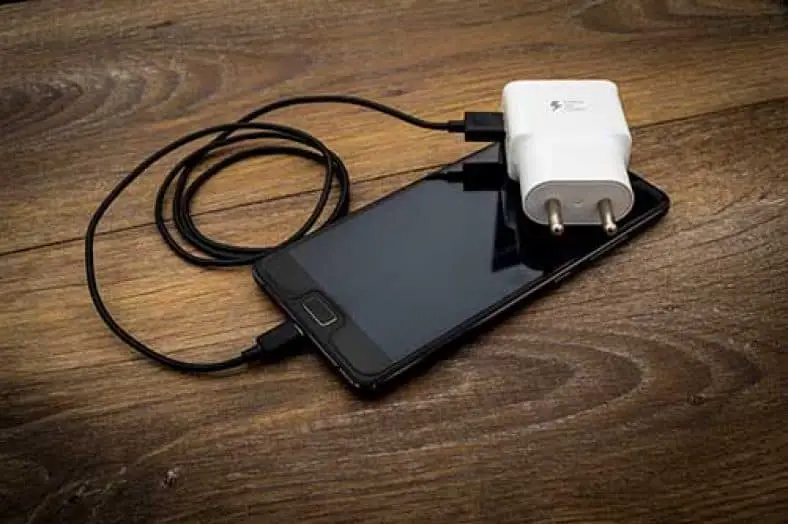Table of Contents
The word “fast” pretty much gives it away, right? But eventually, it doesn’t tell the whole story. So, what is fast charging?
In simple terms, it’s the ability to charge your phone in less time than it would be usual.
If you hear anyone talking about energizing and using the terms Fast, Rapid, or Quick, they all mean pretty much the same.
Now let’s dive into our article:
What is a normal charge rate?
The conventional charge occurs by supplying 5V (5 volts). 5V/2A is a good charge rate. Some chargers will supply even higher rates, like 5V/2.4A or 5V/3A.
But it wasn’t always like that. A few years ago when smartphones were recently on the market, usually charge rates were below 1A. Nowadays I only recommend using below 1A or a 1.5A for small devices like Bluetooth headsets or slow charges. It’s a good option if you charge your phone during the night, using 1.0A will get your phone full during the night.
To know more about normal charge rates head over to our article on Charging a smartphone. Also, check out our tips to charge your phone faster.
But in a fast-paced world where everything happens so fast and you can’t afford to have your phone out of juice, many manufacturers now offer faster options by increasing the voltage.
Fast charge rate
Now that you understand what a regular charge rate let’s go straight to the quicker way.
Take an example of the Nokia 8 charger and its output ratings:
- 5V/2.5A;
- 9V/2A;
- 12V/1.5A.
It features QuickCharge 3.0. That means that beyond the regular 5V this charger also supplies energy at 9V and 12V.
QuickCharge is a technology developed by Qualcomm and used in some of their Snapdragon mobile processors. Nokia 8 uses one of those and maybe so does your phone.
The phone will only receive the energy it can take and no more. Modern phones are smart enough to do that.
The rule is they will charge at the fastest possible speed that is supported by both devices.
If the Nokia 8 is charged with a regular charger it will charge at 5V. But if you use its original equipment charger or a QuickCharge 3 compatible charger, it will go up to 12V, replenishing a lot faster.
Is it backward compatible?
Yes. Let’s take another example using Qualcomm’s QuickCharge technology.
If both your phone and its charger feature QuickCharge 4.0 technology, they will also be able to use older 1.0, 2.0, and 3.0 versions.
If one device supports QuickCharge 3.0 and the other is only capable of QuickCharge 2.0, both are QuickCharge 2.0 compatible.
Are there any downsides that I should be aware of?
In certain circumstances, the quick charge is a blessing and you should use it if you need to.
Faster replenishing speeds increase the battery’s temperature which is not good for its longevity. Because of that, the smartphone will reduce that charge rate whenever it’s needed so that the battery doesn’t heat up too much.
That said, it’s not something you shouldn’t worry much about if you’re planning to trade phones every 2 years.
If you’re looking to keep your phone for 4-5 years, then it’s a different story. In that case, only use this technology when you’re really in a hurry.
But you can minimize its effects while extending your battery’s life:
- If you have literally hours to charge your phone, avoid using fast replenishing. Normal or even slow rates will be fine;
- Using your phone while energizing also generates more heat. If you can, put your phone to rest;
- Playing games and filling the battery at the same time will most likely generate considerable heat, do avoid it;
- Almost all of us use a case to protect our phones, right? Removing your phone’s cover helps to dissipate heat;
- Don’t let your phone be exposed to direct sunlight.
Anything else?
Unlike normal charges, the quick way has a limited duration. Because this generates a lot more heat in the battery, this powerful charge rate won’t be constant to avoid overheating the battery.
That means that when you plug your phone it will start filling as rapidly as possible but it will then decrease speed as heat builds up. The fast filling is particularly useful and effective when the battery is below 50% and will have little or no difference after your battery has reached 60-70%.
But that’s not a bad thing. Where this technology comes really handy is when you’re running low on battery and you need a quick increase fast.
More resources
For more technical information check AndroidAuthority’s article, How fast charging really works. Another good article is from DigitalTrends, How does fast charging work? Here’s every single standard compared.
Should you charge your phone overnight? Find out now!
To make sure your phone is powered up on the go check out our article on How to choose a powerbank.

